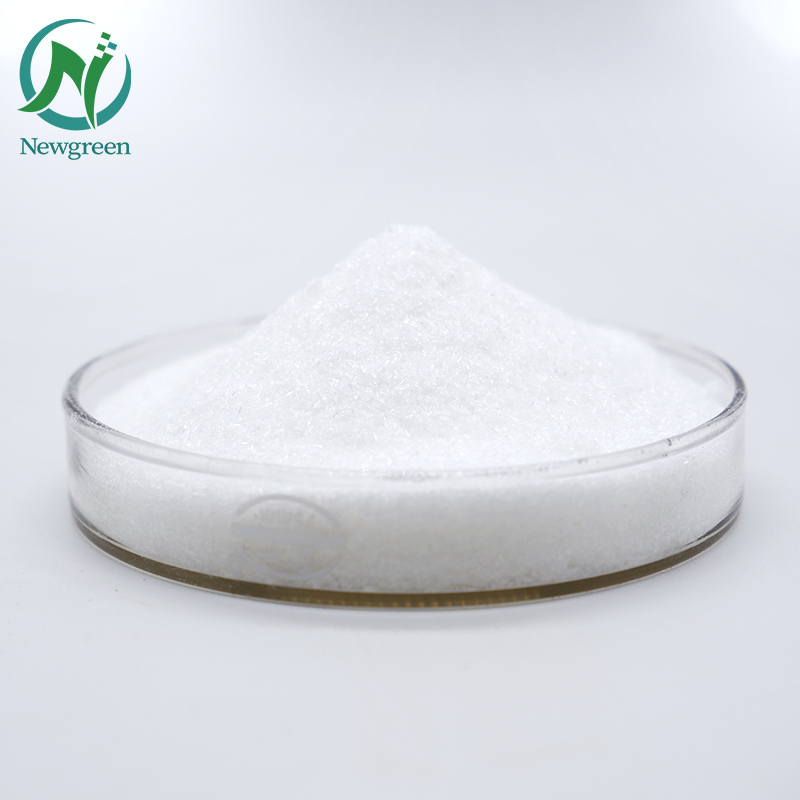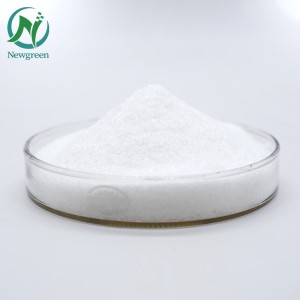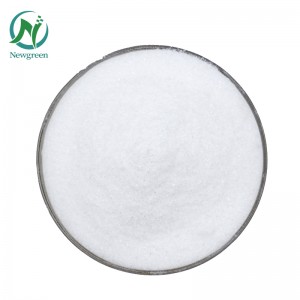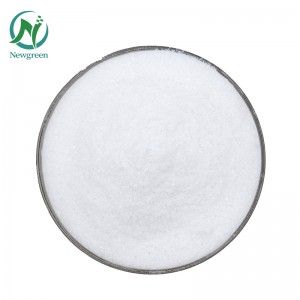D-Tagatose Factory supply D Tagatose Sweetener with best price

Product Description
What is D-Tagatose?
D-Tagatose is a new type of naturally derived monosaccharide, an "epimer" of fructose; its sweetness is 92% of the same amount of sucrose, making it a good low-energy food sweetness. It is an agent and filler and has various physiological effects such as inhibiting hyperglycemia, improving intestinal flora, and preventing dental caries. It is widely used in food, medicine, cosmetics and other fields.
Certificate of Analysis
| Product Name: D-Tagatose
Batch No: NG20230925 Batch Quantity: 3000kg |
Manufacture Date: 2023.09.25
Analysis Date: 2023.09.26 Expiration Date: 2025.09.24 |
||
| Items | Specifications | Results | |
| Appearance | White Crystals Powder | Complied | |
| Assay(dry basis) | ≥98% | 98.99% | |
| Other polyols | ≤0.5% | 0.45% | |
| Loss on drying | ≤0.2% | 0. 12% | |
| Residue on ignition | ≤0.02% | 0.002% | |
| Reducing sugars | ≤0.5% | 0.06% | |
| Heavy metals | ≤2.5ppm | <2.5ppm | |
| Arsenic | ≤0.5ppm | <0.5ppm | |
| Lead | ≤0.5ppm | <0.5ppm | |
| Nickel | ≤ 1ppm | < 1ppm | |
| Sulfate | ≤50ppm | <50ppm | |
| Melting point | 92--96C | 94.2C | |
| Ph in aqueous solution | 5.0--7.0 | 6. 10 | |
| Chloride | ≤50ppm | <50ppm | |
| Salmonella | Negative | Negative | |
| Conclusion | Meet the requirements. | ||
| Shelf life | 2 years when properly stored | ||
What is the function of D-ribose?
D-Tagatose is a naturally occurring sugar that has multiple functions. Here are some of the features of D-Tagatose:
1. Sweetness: The sweetness of D-Tagatose is similar to that of sucrose, so it can be used as an alternative sweetener for flavoring food and beverages.
2. Low calorie: D-Tagatose is low in calories, so it can be used to reduce sugar intake in food and beverages.
3. Blood sugar management: D-Tagatose has less impact on blood sugar, so it may be helpful in diabetes management.
What is the application of D-ribose?
1. Application in health drinks
In the beverage industry, the synergistic effect of D-tagatose on powerful sweeteners such as cyclamate, aspartame, acesulfame potassium, and stevia is mainly used to eliminate the metallic taste produced by powerful sweeteners. , bitterness, astringency and other undesirable aftertaste, and improve the taste of beverages. In 2003, PepsiCo of the United States began to add combined sweeteners containing D-tagatose to carbonated drinks to obtain zero-calorie and low-calorie healthy drinks that taste basically like full-calorie drinks. In 2009, Irish Concentrate Processing Company obtained low-calorie tea, coffee, juice and other beverages by adding D-tagatose. In 2012, Korea Sugar Co., Ltd. also obtained a low-calorie coffee drink by adding D-tagatose.

2. Application in dairy products
As a low-calorie sweetener, adding a small amount of D-tagatose can significantly improve the taste of dairy products. Therefore, D-tagatose is contained in sterilized powdered milk, cheese, yogurt and other dairy products. With the in-depth research on the performance of D-tagatose, the application of D-tagatose has been expanded to more dairy products. For example, adding D-tagatose to chocolate dairy products can produce a rich and mellow toffee flavor.

D-tagatose can also be used in yogurt. While providing sweetness, it can increase the number of viable bacteria in the yogurt, improve the nutritional value of the yogurt, and make the flavor richer and mellower.
3. Application in cereal products
D-tagatose is easy to caramelize at low temperatures, making it easier to produce ideal color and a more mellow flavor than sucrose, and can be used in baked goods. Studies have found that D-tagatose can undergo Maillard reaction with amino acids to produce 2-acetylfuran, 2-ethylpyrazine and 2-acetylthiazole, etc., which are higher in flavor than reducing sugars such as glucose and galactose. Volatile flavor compounds. However, when adding D-tagatose, attention should also be paid to the baking temperature. Lower temperatures are beneficial to enhancing the flavor, while long-term processing at high temperatures will result in excessively deep color and a bitter aftertaste. In addition, because D-tagatose has low viscosity and is easy to crystallize, it can also be used in frosted foods. Applying D-tagatose alone or in combination with maltitol and other polyhydroxy compounds on the surface of cereals can increase the sweetness of the product.
4. Application in candy
D-tagatose can be used as the only sweetener in chocolate without much change in the process. The viscosity and heat-absorbing properties of chocolate are similar to those when sucrose is added. In 2003, New Zealand Mada Sports Nutrition Food Company first developed chocolate products with flavors such as milk, dark chocolate and white chocolate containing D-tagatose. Later, it developed various chocolate-coated dried fruits, dried fruit bars, Easter eggs, etc. Novel chocolate products containing D-tagatose.

5. Application in low-sugar preserved food
Low-sugar preserved fruits are preserved fruits with a sugar content of less than 50%. Compared with high-sugar preserved fruits with a sugar content of 65% to 75%, they are more in line with the "three lows" health requirements of "low sugar, low salt, and low fat". Since D-tagatose has the characteristics of very low calorie content and high sweetness, it can be used as a sweetener in the production of low-sugar preserved fruits. Generally, D-tagatose is not added to preserved fruit as a separate sweetener, but is used together with other sweeteners to prepare low-sugar preserved fruit products. For example, adding 0.02% tagatose to the sugar solution for preparing low-sugar winter melon and watermelon can increase the sweetness of the product.

package & delivery

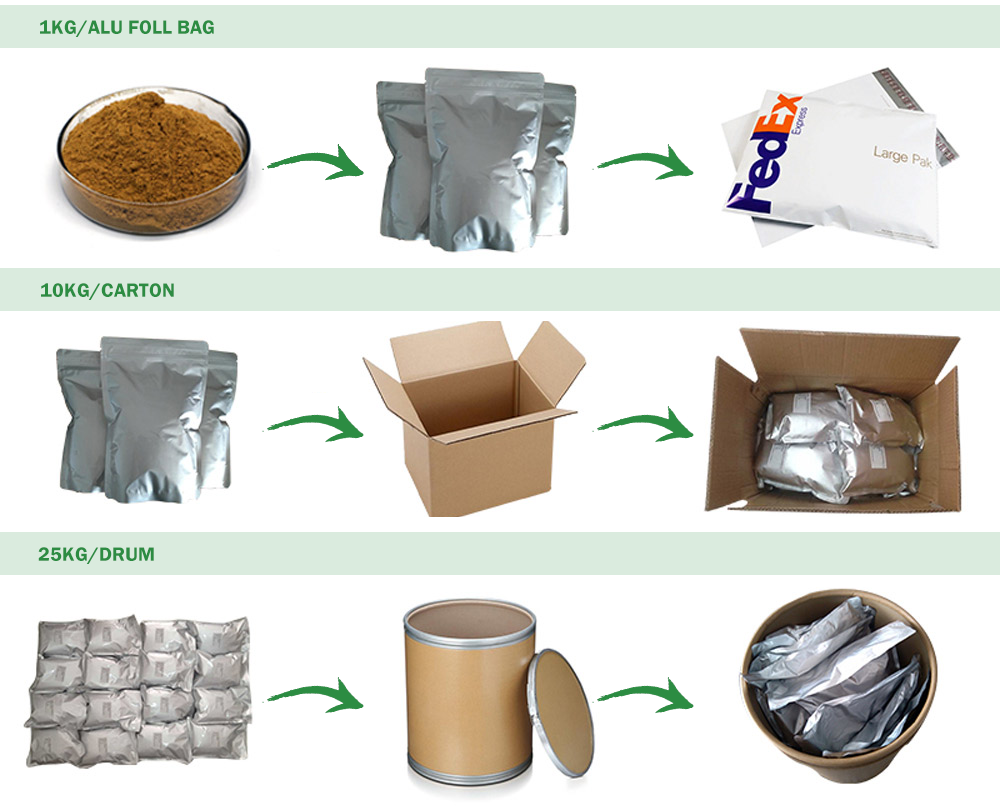
transportation



